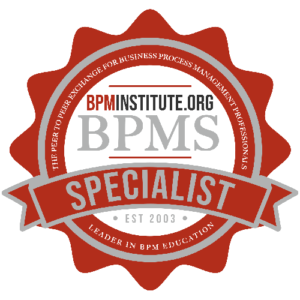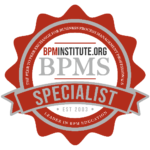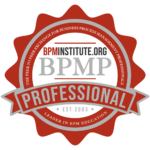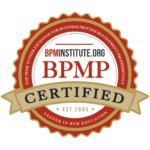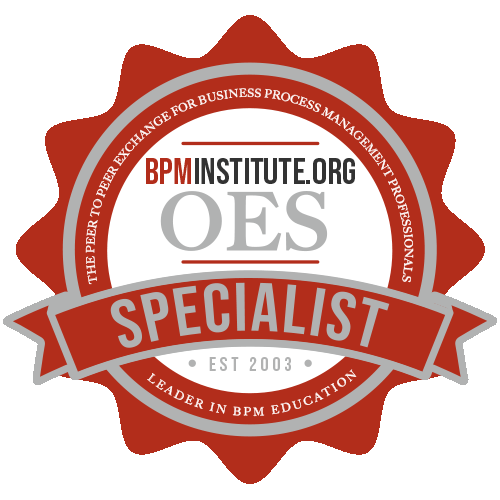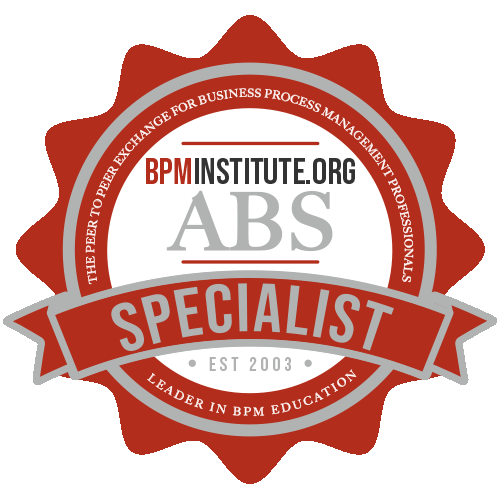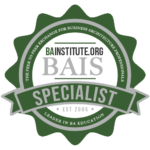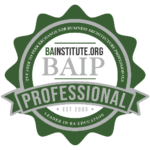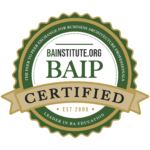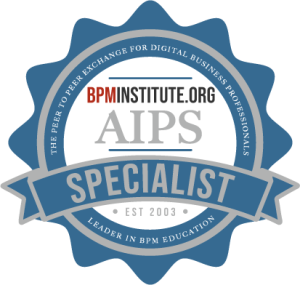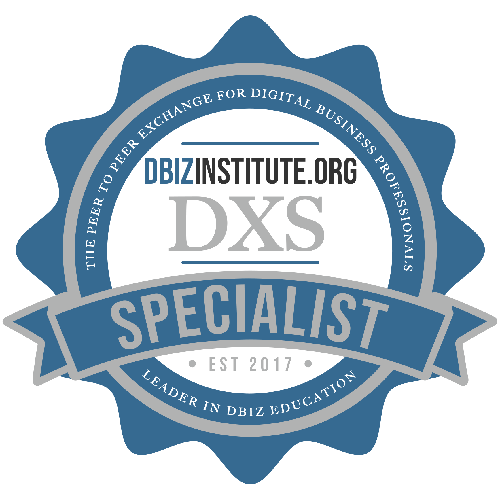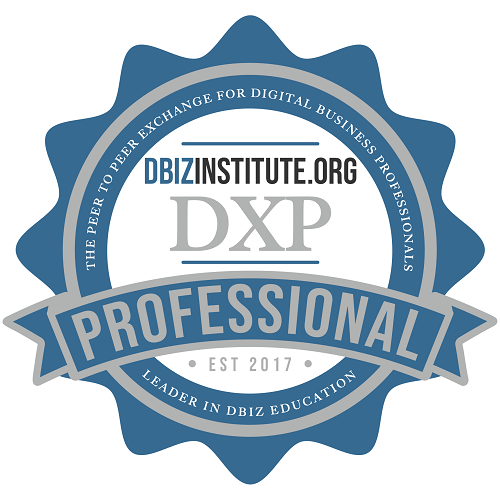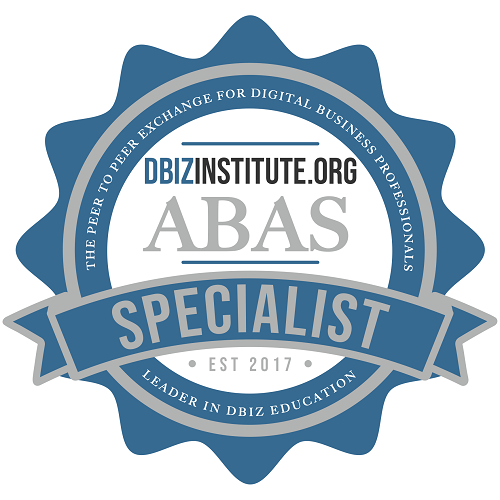Home / Resources
Resources
Discover a Wealth of BPM Knowledge and Expertise at BPMInstitute.org!

The Role of Organizational Change Management in Business Architecture
Recently I described the role of the Business Architect in developing a formal Organizational Change Management program. As a result, I had an interesting conversation with a CIO. This CIO had a good understanding of and appreciation for business architecture.

Vetting Business Architecture (BA) Approaches
This is the inaugural year for the BusinessArchitectureInstitute.org with its recent launch this past spring. The growth of interest and the demands for information surrounding Business Architecture (BA) have increased significantly over the past few years. BrainStorm BA conference attendees and BA training class students have benefited from seeing a new approach emerge for the enterprise. Hopefully, the reader has participated in one of this year’s BrainStorm events and learned of the many opportunities associated with the Business Architecture.

SOA and Cloud Computing
Cloud Computing is an emerging style of IT delivery in which applications, data, and IT resources are rapidly provisioned and provided as standardised offerings to users over the web in a flexible pricing model.
At a recent conference where I presented on the current state of Cloud Computing, I was pleasantly surprised at the level of genuine interest given the current low investment situation in which most companies find themselves.

Cloud Computing – or Whatever You Call It
Organizations are moving applications and infrastructure to servers on the Internet at an increasingly rapid rate and Cloud Computing – or whatever you call it – is changing the way people access information as well as they way they work and play. That is making the term ”Cloud Computing” more ubiquitous. Yet, as often happens with emerging technology waves, it is also making the term more confusing and vague.
Case Management Strategies and Best Practices: Taking traditional BPM way beyond conventional workflow, routing and collaboration
If you are a corporate executive or business process manager interested in effecting positive change and gaining control of your company’s core business process in 2009, then this Business Roundtable is right for you.
In this dynamic session, Pallas Athena will show how Case Management approaches are changing how companies look at typical BPMS solutions. Case Management is not new but can have an immediate positive impact on your company, your employees and your financial bottom-line.

Staying Within the Fringes: Ways to Reduce BPM Implementation Cost
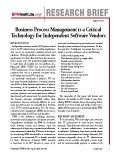
Research Brief: Making BPM Pervasive
If the discipline of process management, improvement and optimization is so valuable, why is it not more pervasive in the fabric of companies? What might need to happen to make it so pervasive? One answer: Embed it everywhere and make it easy to obtain its value. Embedding BPM discipline and its enabling technology throughout a company results in the benefits of process management becoming accessible to everyone. Some form of process modeling, automation, monitoring and reporting can then be done by all employees rather than a select few “process experts”. Continuous process improvement is then supported through instinct, experience and observation rather than just through formal analysis. Process skills become more broadly internalized and practiced as a fundamental work habit. A critical partner in the objective of embedding BPM is the Independent Software Vendor.
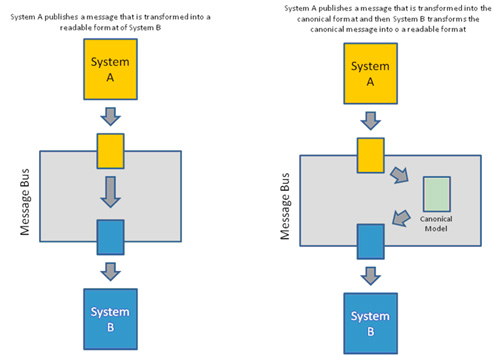
Migrating to an Enterprise Service Bus – It’s worth the effort to do it right
Migrating to an Enterprise Service Bus (ESB) is a bigger decision than many companies realize. It creates the opportunity for central management and access points for all the services available in the enterprise. When determining the need and the method for enabling an ESB for services, there are several important considerations. The ESB can act as a simple access point in terms of acting as a proxy to hosted web services; it can orchestrate calls to many web services through languages like BPEL, and it can also house the web service code itself.
BPMS Watch: The DI Mess
BPMS Watch readers know I am a big fan of OMG’s Business Process Modeling Notation (BPMN) 2.0, which has passed its first approval hurdle and is now in the Finalization Task Force stage. A major reason is that for the first time, BPMN has standardized the schema for XML interchange of process models.

Business Architect Job Description
I am often asked to describe the role of the Business Architect; the role is new enough that most Resource Managers do not have a job description on file. Of course, the answer depends on the context within which the question is asked. Sometime I describe what the Business Architect “does.” Other times I describe what the Business Architect “accomplishes.” Yet other times the inquirer really wants to know what “skills” the Business Architect should possess.
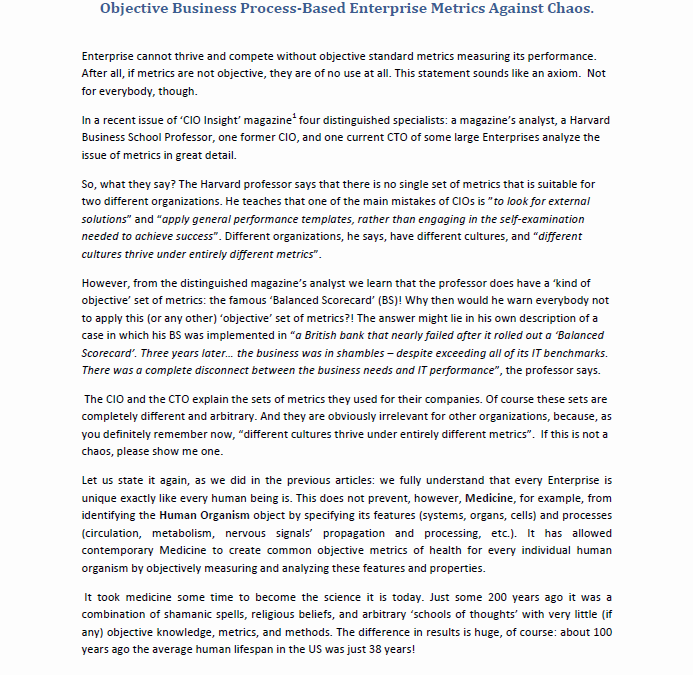
Objective Business Process-Based Enterprise Metrics Against Chaos
Enterprise cannot thrive and compete without objective standard metrics measuring its performance. After all, if metrics are not objective, they are of no use at all. This statement sounds like an axiom. Not for everybody, though.

The Power of Abstraction
The power to abstract is fundamental to innovation. When ideas are scarce, a fresh viewpoint makes all the difference. Abstraction is also a hierarchical process, and that perfectly fits the needs of the innovator facing complex problems requiring system solutions. The Abstraction Ladder

Testing the Waters: Starting a Business Architecture Practice
Many organizations are in the process of starting or considering whether they should be starting a Business Architecture practice. But most are still working to decide what they practice really looks like. Starting a new practice area is never easy and the risks that a new practice might not succeed are high. To make sure that your organization’s Business Architecture practice doesn’t fall victim to this risk it is important to have a plan for how to grow your practice.

Transforming the Enterprise: SOA + DM
Today’s business challenges are consistently increasing in number, frequency and complexity. Addressing these challenges requires a level of agility that has not been technologically attainable in the past. However, innovative approaches and technologies such as Service-Oriented Architecture and Decision Management are now enabling companies to better connect, organize, manage and enable their organizations.
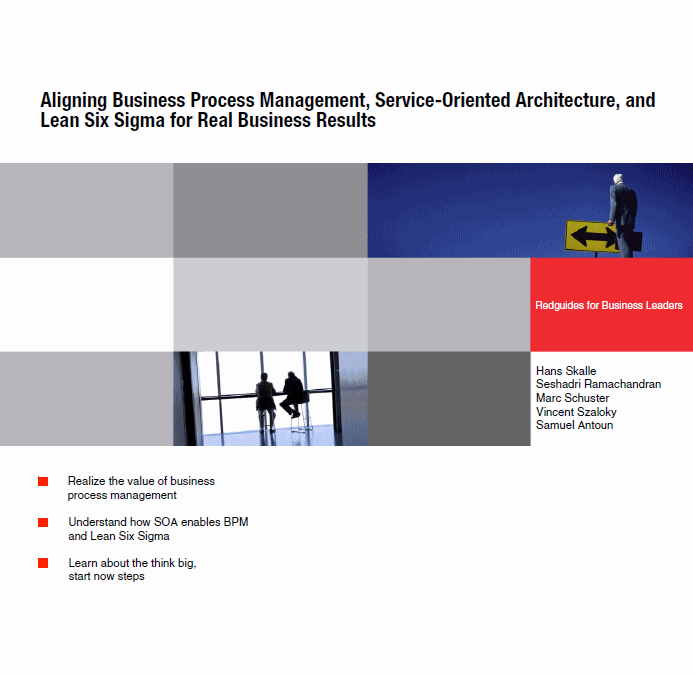
Aligning Business Process Management, Service-Oriented Architecture, and Lean Six Sigma for Real Business Results
Lean Six Sigma and business process management have much in common. Both methodologies use iterative improvement and design techniques to deliver financial and performance benefits through better managed and optimized processes. Download this free comprehensive 52 page IBM Redguide to:
- Realize the value of business process management
- Understand how SOA enables BPM and Lean Six Sigma
- Learn about the think big, start now steps

Achieving Purpose and Flexibility in Service-Oriented Design: Approaches with Use Cases and Service Taxonomies
Over the past decade, we have learned that the challenge of building service-oriented solutions is less about technology and more about solving real-world business problems. Enterprise architects realize that any solution must revolve around an organization’s business processes, IT infrastructure, policies, and standards, and it makes sense that many aspects of service design will revolve around those key areas.

BPM, Lean, and Six Sigma – Better Together
Business improvement disciplines today are generally looked at as competing with one another. This article takes a different position. It is our belief that each of the major disciplines, BPM, Lean, and Six Sigma, have weaknesses that the others fill and that together, they provide a change environment that delivers the full promise of each.

The Process Practioner – An Independent Review of Appian Enterprise and Appian Anywhere
Introduction This is the third in a series of articles evaluating tools used by process professionals. As with previous reviews, I approach the subject as a business professional with a need to document, analyze, and improve processes, not as an IT professional or a BPMS industry expert – I am neither. My most critical criteria are once again ease of use, a short learning curve, and good collaboration features.

BPMS Watch: Teaching Elephants to Dance
In these tough times, even the most change-resistant organizations are re-examining whether past practice should continue to govern standard operating procedures. Government and airlines, for example, spring to mind. Last week, I saw further evidence of this in delivering a BPMN training class to one of the many Federal agencies involved in financial regulation. I was surprised to find that most in the class were experienced process modelers already. Many had prior BPMN experience, for some including BPMN-based BPM Suites. The processes of greatest interest concerned
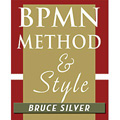
BPMN Method and Style
Creating business process models that can be shared effectively across the business – and between business and IT – demands more than a digest of BPMN shapes and symbols. It requires a step-by-step methodology for going from zero to a complete process model. It also requires consistent application of a modeling style, so that the modeler’s meaning is clear from the diagram itself. Author Bruce Silver explains not only the meaning and proper usage of the entire BPMN 2.0 palette, but calls out the working subset that you really need to know. He also reveals the hidden assumptions of core concepts left unexplained in the spec, the key to BPMN’s deeper meaning.
